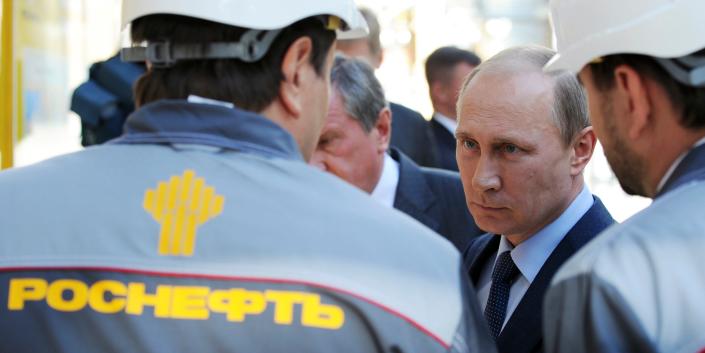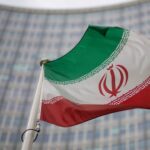
-
G7 countries are readying price controls as a way to dent Putin’s war funding and lower energy prices.
-
The tool — last used by the US in the 1970s — would set an artificial limit on the price of Russian oil.
-
Price caps have curried new favor in recent weeks, but they risk worsening inflation in the long term.
Seven of the world’s most powerful countries are dusting off a five-decade-old economic tool in their latest bid to kneecap Russia’s critical energy sector.
The tactic is called price control. Its effectiveness is up for debate, and some economists fear the move could have some serious blowback.
The Group of Seven — Canada, France, Germany, Italy, Japan, the United Kingdom, and the US — agreed on Friday to set a price cap for Russian oil, the group’s finance ministers said in a statement. The limit will allow the group to only purchase Russian crude oil and petroleum at a yet-to-be-announced price or below it, effectively creating a buyers’ cartel and capping how much cash G7 nations will pay the Kremlin for its oil. As the finance ministers put it, the measure will “reduce Russian revenues and Russia’s ability to fund its war of aggression.”
The move follows a similar pledge by the European Commission to overhaul the EU’s electricity market with emergency measures. Electricity prices have spiked throughout the bloc, due in part to Russia’s cutting off of natural gas to western Europe.
The revival of price controls signals a significant pivot from the economic status quo of the last several decades. And just as Russia’s invasion of Ukraine has rattled the decades-long trend toward globalization, the economic war between the West and the Kremlin is changing the way governments are fighting inflation.
Reviving price controls after a half-century hiatus
Price controls were last adopted across the world’s biggest economies in the 1970s. US President Richard Nixon froze wages and prices for 90 days in 1971 to fight what later became the inflation crisis of that decade. State governments have also used their own price controls to avoid price gouging by companies. Hawaii temporarily capped gasoline prices in 2005 to counter large price hikes, and California’s own anti-gouging laws kicked in during early coronavirus lockdowns.
Yet while price controls have been put to use in selective recent cases, they’re mostly regarded as emergency interventions. President Ronald Reagan ended Nixon’s own caps when he became president in 1981, and that administration’s push for a free-market economic framework was incompatible with the idea of a government directly influencing prices and wages.
Reaganomics set the global economic standard for decades, but the G7’s Friday announcement signals a move back toward Nixon’s price controls. The policies are fitting for an occasion that mirrors the 1970s. When Nixon introduced his price and wage caps, inflation was extraordinarily high and fears of stagflation were running rampant.
Those same problems loom large today, and influential voices are increasingly favoring a shift away from free-market economics to cripple one of Russia’s major sources of cash. The Washington Post’s editorial board backed such policies in a Monday column, calling the G7’s price cap “clever” and arguing it can “stanch Russia’s gusher of oil money.”
Europe’s looming energy crisis requires a “radical approach” that includes capping prices below market rates for some time, Torsten Bell, CEO of the think tank Resolution Foundation, said in a recent Financial Times column.
Price caps risk worsening inflation — if they work at all
On the surface, price controls targeting Russian oil should both lower oil prices for consumers and leave President Vladimir Putin with less cash for his war. Yet their use could have some serious recoil for participating countries.
That’s because price controls fundamentally alter the dynamics that capitalist economies have relied on for decades. Pricing for the vast majority of goods and services depends on the amount of supply and demand in the market. When supply is rampant and demand is weak, prices decline to balance the two out. Conversely, in pandemic-era scenarios when supply is scarce and demand is strong, prices soar higher.
Allowing the government to set a limit on prices can throw off that free-market balance in two key ways. Supply will likely drop, as firms will be making less cash. Demand, meanwhile, will probably climb higher still as consumers rush to take advantage of the artificially lowered prices.
Supply and demand are already out of sync, and price controls threaten to exacerbate the gap that’s lifted inflation to four-decade highs. In a January survey conducted by the University of Chicago’s Booth School of Business, 61% of surveyed economists disagreed with the idea that price controls like those seen in the 1970s could successfully cool inflation.
While price controls might remove the G7 from Russia’s oil trade, the Kremlin has already threatened to take business elsewhere. China and India counted for roughly 50% of Russia’s seaborne oil exports in June, and sales are expected to climb through the rest of the year. The Kremlin has already cautioned it won’t sell any oil to countries that impose price limits, and the loss of Russian supply could worsen shortages in participating economies.
“Any actions to impose a price cap will lead to deficit on initiating countries’ own markets and will increase price volatility,” Nikolai Shulginov, Russia’s energy minister, said at the Eastern Economic Forum on Tuesday.
For now, the G7 is holding strong. In a press briefing last week, White House spokesperson Karine Jean-Pierre said price controls are “the most effective way” to slash Putin’s revenue and lower global energy prices.
Read the original article on Business Insider




